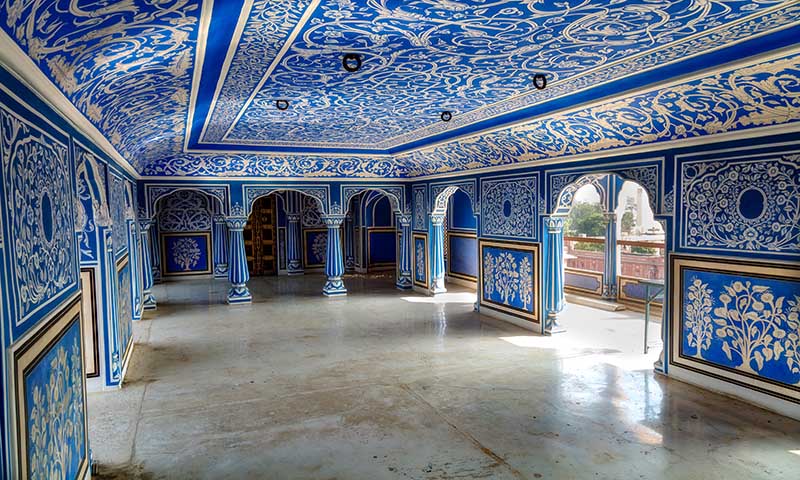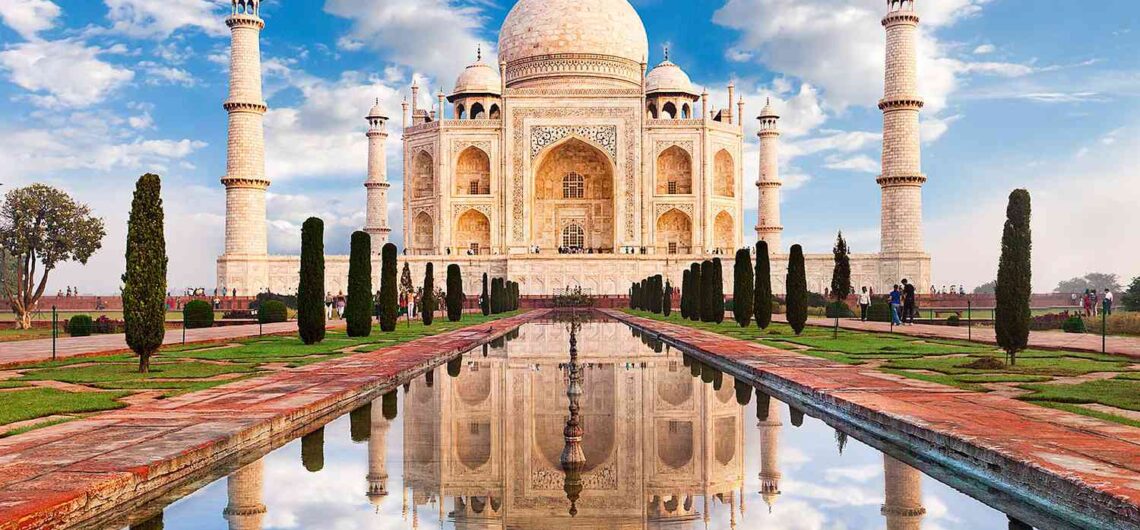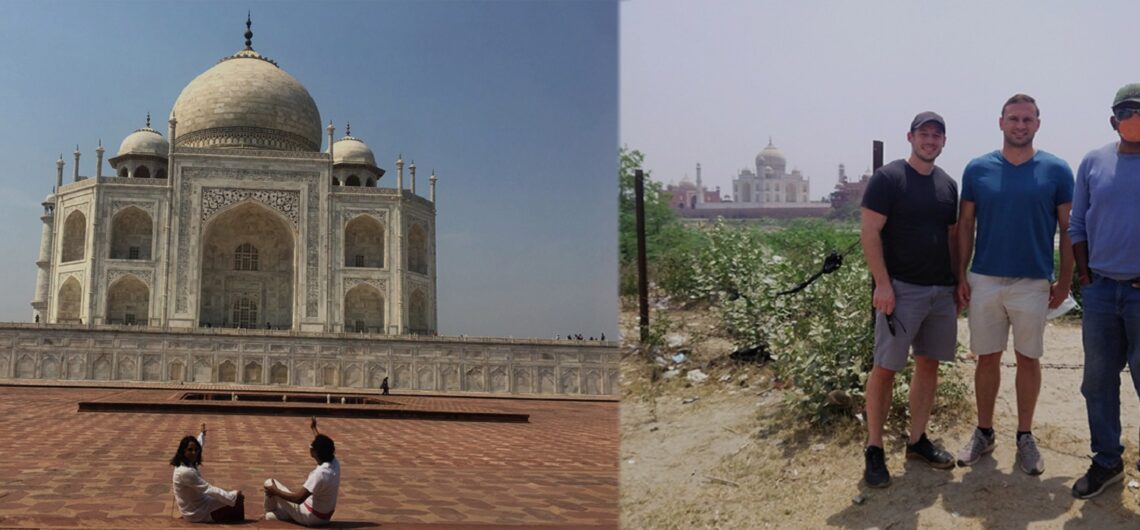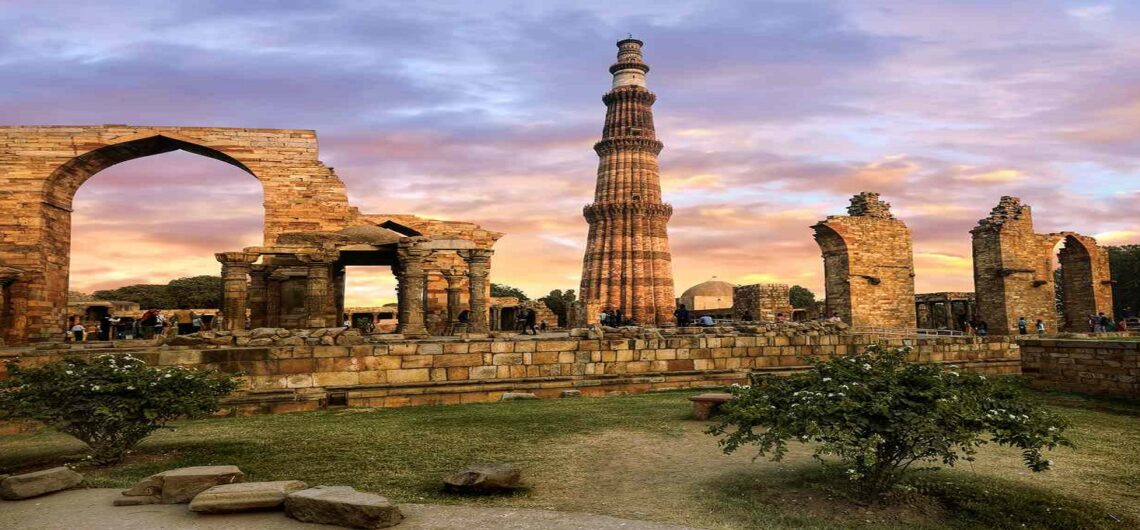During your Jaipur Tour, there are a number of Sightseeing places to visit in Jaipur. The capital city of Rajasthan is known as the Pink City due to its brightly colored buildings. The city also has a stately street grid and a number of museums and gardens. Visiting Jaipur Tours & attractions will give you the opportunity to see the beautiful city, enjoy its historical sites, and experience its enticing culture. Located in the Indian state of Rajasthan, Jaipur is a vibrant city known for its colorful buildings, a stately street grid, and a regal, royal family that once ruled the region. Explore the Best Sightseeing Places to Visit in Jaipur Chokhi Dhani Jaipur Located in the countryside of Rajasthan, Chokhi Dhani is a resort that offers tourists a look at the rural life. The resort houses a variety of facilities, such as a photo studio, game center, and craft bazaar. Its aim is to rekindle Indian crafts and traditions. The resort is famous for its puppet show, which uses Rajasthani history and culture to tell stories. The puppeteers use beautifully decorated puppets to perform their tricks. The puppet show also has folk dance performances and traditional fire acts. Another attraction at Chokhi Dhani is the magic show. The magicians perform their tricks with ease. In addition to that, there are acrobatics on bamboo trees. The re-enactment of the battle of Haldighati, which took place in Rajasthan, is also a great attraction. The battle involved Rajputs led by Maharana Pratap Singh. Besides that, the resort also offers various dining options. There are four different halls at Chokhi Dhani. The largest restaurant is Aragosta, which serves multi-cuisine cuisine. Another dining option is the Jeeman Khas, which features dining options such as the Royal Fine Dining and the Chaupad. Amer Fort -
During your Jaipur Tour, there are a number of Sightseeing places to visit in Jaipur. The capital city of Rajasthan is known as the Pink City due to its brightly colored buildings. The city also has a stately street grid and a number of museums and gardens.
Visiting Jaipur Tours & attractions will give you the opportunity to see the beautiful city, enjoy its historical sites, and experience its enticing culture. Located in the Indian state of Rajasthan, Jaipur is a vibrant city known for its colorful buildings, a stately street grid, and a regal, royal family that once ruled the region.
Explore the Best Sightseeing Places to Visit in Jaipur
Chokhi Dhani Jaipur
Located in the countryside of Rajasthan, Chokhi Dhani is a resort that offers tourists a look at the rural life. The resort houses a variety of facilities, such as a photo studio, game center, and craft bazaar. Its aim is to rekindle Indian crafts and traditions.
The resort is famous for its puppet show, which uses Rajasthani history and culture to tell stories. The puppeteers use beautifully decorated puppets to perform their tricks. The puppet show also has folk dance performances and traditional fire acts.
Another attraction at Chokhi Dhani is the magic show. The magicians perform their tricks with ease. In addition to that, there are acrobatics on bamboo trees. The re-enactment of the battle of Haldighati, which took place in Rajasthan, is also a great attraction. The battle involved Rajputs led by Maharana Pratap Singh.
Besides that, the resort also offers various dining options. There are four different halls at Chokhi Dhani. The largest restaurant is Aragosta, which serves multi-cuisine cuisine. Another dining option is the Jeeman Khas, which features dining options such as the Royal Fine Dining and the Chaupad.
Amer Fort – One of the Top Places to Visit in Jaipur
Located in the city of Jaipur, Amer Fort is a fascinating historical structure that is a must-visit destination. The fort is known for its artistic style and awe-inspiring structures. It is also known for the Great Wall of Amer, which is an impressive structure that is no longer walkable.
There are two main ways to visit the fort. One is by taxi or auto-rickshaw. The other is by walking up a hill. There are also two parking options, front, and back. The front parking is located near the elephant ride boarding point. A taxi or auto-rickshaw will cost you around Rs85. The backside parking is located throughout the town of Amer.
The fort is open to visitors between 8 am and 5 pm. The best time to visit is during the cooler months of October and March. Although the winter months can be very cold and dry, the days are sunny and pleasant. However, the night can be very chilly.
A visit to the fort should include the following: Ganesh Pol, the Sheesh Mahal, the Diwan-e-Aam, the Jai Mandir, and the Shila Devi temple. The Shila Devi temple is one of the few buildings that is still under the stewardship of the Jaipur royal family. The temple is made of white marble and features a silver double door.
City Palace

Among the many attractions of Jaipur, the City Palace is an icon of elegance and grandeur. Its architecture is a fusion of Mughal and Rajput architectural styles. It was built by Maharaja Sawai Jai Singh II. The complex consists of palaces, temples, and gardens.
The complex is divided into two parts. One part contains the royal family residence. The other part is a museum. The museum features objects from a collection of 4,000 pieces.
The museum offers a variety of objects from different eras. There are weapons used by the royal family and antique collections of royal family belongings. There are also carved marbles, inlaid ornaments, and unique murals. It is a good place for art lovers to visit.
City Palace Jaipur also offers an audio guide service. Visitors can choose a local language guide or an English guide. They also have the option of purchasing composite tickets. Some areas of the palace are also open to the public.
The complex is home to the last ruling royal family. There are four gates: Green Leheriya Gate, Rose Gate, Pitam Niwas Chowk, and Pritam Niwas Chowk. Each gate represents a season. There is also a special room called the “Royal Darbar.” It contains a royal throne. The room is decorated with a salubrious mix of gold and red.
Hawa Mahal – One of the most photogenic places to visit in Jaipur
Located at the heart of the Pink City, Hawa Mahal is a must-see monument in Jaipur. Besides its ethereal architecture and breathtaking views, it’s also home to a small museum that displays ancient artifacts.
Hawa Mahal is a five-story structure made of red and pink sandstone. It was built in the year 1799 by Maharaja Sawai Pratap Singh, who was inspired by the Khetri Mahal in Jhunjhunu. He designed the structure to offer daily views to the royal women.
The exterior walls of Hawa Mahal are decorated with lattice window facades. This allows the breeze to cool the interiors of the structure. The windows are decorated with intricate designs. The facade also features hanging cornices.
Hawa Mahal is best visited during the early morning hours. The structure is a popular landmark in Jaipur and attracts millions of visitors every year. The interiors are much simpler than the exteriors.
The entrance fee for Hawa Mahal is Rs.20 per person. However, foreigners are required to pay an additional fee of Rs.10. There is a separate entry ticket for photographers.
Jantar Mantar
Located in the heart of Jaipur, Jantar Mantar is one of the most popular tourist attractions in the city. It was built in the early 18th century and was one of the five observatories built in India at that time.
Jantar Mantar is one of the most important astronomical and scientific monuments in the world. The instruments here are made of stone and marble and are used to measure time and the position of planetary bodies. These instruments are known for their accuracy.
Jantar Mantar was declared a UNESCO World Heritage Site in 2010. It is also a national monument. It is a collection of large and intricate instruments. Jantar Mantar is composed of 19 astronomical instruments, including the Brihat Samrat Yantra, which is the largest sundial in the world. The instrument measures time and provides local time with an accuracy of two seconds.
The Jantar Mantar was designed in an open-air observatory. It was built to provide a better view of the sky. Despite being built in the early 18th century, the observatory still retains its original architectural features. The observatory is located near the City Palace in Jaipur. The observatory offers a guided Jaipur tour.
Jaigarh Fort – Another Best Places to Visit in Jaipur
Located north of Jaipur city, Jaigarh Fort is a historical monument in Jaipur. This fort was built in 1726 by Sawai Jai Singh II. The fort is known for housing the world’s largest cannon. The cannon was never used in a battle. The fort is surrounded by a thick red sandstone wall.
The fort is also home to a large number of palaces, temples, and a museum. There is also a handcraft emporium, which features crafts and artifacts made by local artisans.
The fort is about three kilometers long and has three arched entrances. It also features a watchtower that gives visitors an unobstructed view of the entire landscape.
The fort is open from 9:00 am to 4:30 pm on all days. The entry fee is Rs. 35 for Indians and Rs. 85 for foreigners. A fort guide is also available for an additional fee.
The fort has a well-kept garden and two ancient temples within the fort’s premises. One temple, called the Kal Bhairav Temple, is believed to be built in the 12th century. The other temple, called the Ram Harihar Temple, is a 10th-century construction.
Nahargarh Fort
Located on the edge of the Aravalli hills, Nahargarh Fort is the largest fort in India. Built during the reign of Sawai Jai Singh II in 1734, the fort’s architecture combines Rajputana and Indo-European styles. The fort is a popular tourist attraction, as it provides incredible panoramic views of Jaipur.
The main palace part of Nahargarh fort is open from 10 am to 5:30 pm. You can buy an entry ticket to the fort for INR 50 for Indian tourists and INR 200 for foreign tourists.
The fort also has a museum. The museum contains a collection of paintings and other handicrafts, as well as local kings’ portraits. It is also home to one of six Egyptian Mummies in India.
Another major attraction is the Wax Museum. Located inside the fort, this museum features more than 30 wax statues of famous personalities. The museum is divided into three sections. The first section features portraits of the royal family, including a portrait of the former king Jai Singh. The second section features the works of twelve Indian artists. It also has sculptures and frescoes.
Albert Hall Museum
Located in Ram Niwas Garden, the Albert Hall Museum is one of the oldest museums in Jaipur. This architectural marvel is a testament to the rich heritage of Pink City. The building was constructed in the 19th century and was designed by Sir Samuel Swinton Jacob.
This museum is famous for its unique collection of artifacts. The building itself is designed in an Indo-Saracenic style. The exteriors are decorated with stone ornamentation. It also features a unique structure that makes it one of the best museums in Jaipur.
The museum has sixteen art galleries. Each gallery exhibits a different type of art. Some of the galleries are Textiles, Clay Art, Musical Instruments, Garments, Marble Art, and Ceramics. The museum also displays a variety of other art forms. During the daytime, the museum is surrounded by verdant gardens. At night, the building is lit up with beautiful colors. The museum is also home to a live puppet show. This is one of the most popular attractions at the museum.
The museum also houses an ancient Egyptian mummy. This is one of the six museums in India to display this object. The museum is also home to a collection of ancient coins. These coins date back to the Guptas, Mughals, and the Delhi Sultanate.
Masala Chowk
Whether you are looking for an authentic Rajasthani street food experience, or you simply want to enjoy a delicious meal in a fun environment, Masala Chowk is a must-try food spot in Jaipur. This food court, located in the Ram Niwas Garden, is popular among locals and tourists alike. Here, you can find the best of Jaipur’s famous eateries.
Some of the famous eateries at Masala Chowk include Raman Dosawala, Jaipuri Chatkara, and Gopal Singh Patasi Bhandar. All these eateries are renowned for their South Indian dishes and special chaats. In addition, Masala Chowk offers a wide variety of Jaipur’s street foods. Here, you can try dishes such as Uttapam, Samrat’s Samosa, and Samrat Ki Kachori.
The Open-Air Food Court is another must-try at Masala Chowk. This is a quaint space that brings together some of the most famous street foods in Jaipur. Some of the best food options available at this food court include Ras omelete, and Anda pav bhaji.
The best time to visit Masala Chowk is during the day. However, the evening is also a great time to eat and mingle with locals.
Birla Temple
Located at the base of Moti Dungri Hill, the Birla Temple in Jaipur is an important religious tourist attraction. It is a combination of ancient Hindu style and modern architectural elements. It is constructed of white marble.
The temple is considered one of the finest in India. The three domes of the temple symbolize three religions. There are various sculptures on display that depict great achievers and philosophers.
It is also home to a small museum. The museum is free to enter. The museum houses the ancestral belongings of the Birla family. It also displays ancient artifacts. The temple is open from 9 AM to 5 PM on weekdays and is open from 6 AM to 9.55 PM on weekends.
The temple is illuminated at night, making it a sight to see. The dome lights illuminate the white marble structure. It also glows with colorful bulbs. It is surrounded by a spacious garden, which is home to various flowers.
The temple is surrounded by a lawn. There are various shops and restaurants near the temple. Some of these shops sell simple religious items.
Galta Ji Temple
Located in Jaipur, Galta Ji Temple is a religious heritage site. It was built to honor Saint Galtav. It is considered one of the holiest places to visit in Jaipur. It is a popular destination for Hindu pilgrims. It is also home to a large number of monkeys.
The Galta Kund is the most important water tank in the complex. It is believed to be the source of pure water. During festivals, pilgrims take a holy dip in the kunds. Some brave pilgrims also jump into the tanks.
The temple complex is filled with several sacred tanks. The most prominent structure inside is the Brahma Temple. In addition, there are temples dedicated to Ganesha, Lord Krishna and Lord Ram.
Galtaji Temple also attracts many visitors during the Makar Sankranti festival. During the festival, the temple is decorated. It is open from 5 am to 9 pm on weekdays and sunrise to sunset on weekends. It is free of cost to visit.
Galta Ji is also home to several species of monkeys. They are harmless unless provoked.
Pink Pearl Resort and Fun City
Located in Jaipur, Pink Pearl Resort and Fun City is a great leisure destination for families. It offers a variety of activities including rock climbing, water slides, go-karting, air hockey, laser games, and more. In addition, the resort offers a wide range of amenities including laundry and dry cleaning, picnic areas, and a restaurant.
Guests can enjoy free Wi-Fi and 24-hour front desk services at this fun-filled hotel. It also has a gym and a pool. In addition, rooms have great views and air conditioning.
This resort also offers a variety of other amenities, including a spa, a nightclub, and several restaurants. Its close proximity to major Jaipur attractions makes it a great place to stay for travelers looking to make the most of their trip to Rajasthan.
It is also convenient for business travelers who want to stay close to Jaipur’s main business centers. It also features conference and meeting facilities. It also offers free Wi-Fi and a multi-cuisine restaurant.
This resort is also a great option for weddings, social events, and school trips. It is situated near the Mahapura Mod and NH-8 Ajmer-Jaipur Expressway. It offers a variety of rooms, including royal suites, and VIP royal cottages. The rooms are spacious and come with satellite television.
Gatore ki Chhatriyan
Among the many tourist destinations in Jaipur, Gatore ki Chhatriyan is one of the lesser-known sites. This mausoleum complex was built in memory of Maharajas of Jaipur. It is an attractive location that combines Hindu Rajput architecture with Mughal traditions.
It is a majestic complex of temples, tombs, and cenotaphs. It is a serene place and the perfect backdrop for your Instagram photos. There are several cenotaphs that feature intricate carvings. Besides, it is also the final resting place of Maharajas of Jaipur.
In the past, Gatore ki Chhatriyan served as the royal crematorium for the Rajput rulers of Rajasthan. Its canopy indicates the locations where prior kings were cremated. The mausoleum complex has a number of cenotaphs, which have been built in sandstone and marble. They are topped with an umbrella-shaped dome.
It is also home to the Anokhi Museum of Hand Printing, which focuses on woodblock printing. The museum includes live demonstrations of the process. The museum also features hand-printing prints that have survived the modern age of technology.
Jal Mahal – Top Photogenic Places to Visit in Jaipur
Located in the heart of Man Sagar Lake, Jal Mahal is a beautiful five-story building made of red sandstone. Its symmetrical architecture reflects the regal style of Rajputs. The building is also a popular attraction for photography.
The city of Jaipur has several other historical and architectural landmarks to visit. Some of these include the Amer Fort, the Nahargarh Fort, and the Jaigarh Fort.
One of the best places to visit in Jaipur is the City Palace. The palace features the famous Mubarak Mahal and Chandra Mahal. It also has a splendid interior design, indirect lighting system, and scintillant mirror inlays.
Another great place to visit in Jaipur is the Amrapali Museum. It displays some of the rare tribal jewellery and jewellery from the region. The museum also has lifelike wax statues of kings and celebrities.
The Amer Fort, also known as the Amber Fort, is a magnificent palace in India. Visitors can explore the fort in just two to three hours. It features metal sculptures, ivory sculptures, and traditional paintings from the region.
Patrika Gate
Patrika Gate is one of the most famous tourist attractions in Jaipur. This gate is known for its pink facade and the intricate design. In this gate, there are columns with painted scenes from different parts of Rajasthan. It also features hand-painted walls and ceilings.
Patrika Gate is open to visitors 7 days a week. There is no entrance fee. However, visitors are advised to keep valuables safe. It is safer to visit during daylight hours. You can also visit this gate in the evenings for a musical fountain show.
Patrika gate is a magnificent piece of architecture. The walls and ceilings are painted with intricate motifs and colors. The gate has nine pavilions. Each pavilion is nine feet wide. It is designed according to a nine-point Vastu principle.
Aside from its stunning architecture, the gate also serves as an entrance to the Jawahar Circle Park. This circular park is the largest in Asia. The park features colorful works and features a rainbow walkway. A gate is also a great place for photography.
Jaipur Zoo – One of the Top Places to Visit in Jaipur
Whether you are a tourist or an animal lover, Jaipur Zoo is an ideal place to visit. It is one of the oldest zoological parks in India. It is located in the city of Jaipur in the state of Rajasthan. The park is home to many species of animals.
The park is divided into two parts. One part is for mammals, including elephants, rhinoceroses, and tigers. The other part is for birds and reptiles. The zoo is also home to a number of herbivores, including black bucks, rabbits, and Indian porcupine.
There are 50 different species of animals at the zoo. The park is known for its rare crocodile species. It also has an impressive gharial breeding farm. This breeding farm is the fourth largest in the country.
The zoo is ideal for families and school kids. There is a museum inside the zoo that displays the history of Rajasthan’s wildlife. The zoo also provides visitors with a chance to see animals up close.
The zoo is open on all days except Tuesday. Visitors should plan ahead to visit the zoo. It is best to visit at around 3:00 PM.











